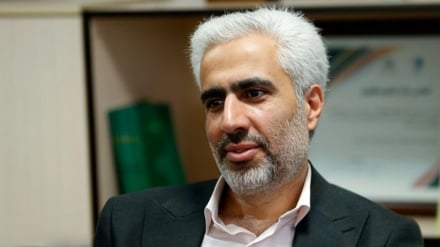Was Palestine an empty land before occupation?
-

An old picture of Palestine
Pars Today - Historical narratives have always played a decisive role in shaping public opinion and legitimizing political actions. One of the most challenging of these narratives is the image presented by the Israeli regime and its supporters of the land of Palestine before the establishment of this regime. In this distorted image, Palestine is presented as an empty, uninhabited, and unused land, with no history, culture, or people before the arrival of Zionism. But was that really the case?
The myth of the ''empty land'' is one of the pillars of Zionist propaganda to justify the occupation of Palestine; the claim by the Israeli Foreign Ministry that Palestine was an empty and desolate desert in 1800 AD is completely false and baseless. Researches show that Palestine at that time was a dynamic, active, and green Mediterranean society. Agricultural lands, a network of commercial ports, land routes between inland areas, and historic cities like Quds and Beit Lahm are signs of the social and economic development and dynamism of this region.
In reality, the myth of the ''empty land'' is clearly contradicted by historical, archaeological, cultural, and demographic evidence. A close examination of the history of Palestine before the establishment of Israel shows that this land was not a desolate desert, but rather a vibrant, populous society with a distinct historical and political identity; a truth that official Israeli narratives deliberately ignore. The well-known narrative promoted by Israel and its supporters is that Palestine, prior to the advent of Zionism, was an empty, barren, and uninhabited land; this myth, which is still taught and repeated today in Israeli textbooks and official media, has been presented as the ideological basis for justifying the occupation of this land and the establishment of Israel. However, historical data, archaeological evidence, and indigenous and international documents show the opposite of this fabricated image.
The name ''Palestine'' entered historical sources during the ancient Roman Empire. This name was later also used for the region during the Byzantine era (Eastern Roman Empire). The indigenous people of Palestine during this period were part of the larger imperial society. With the advent of Islam in the seventh century AD, Palestine became known as an important land for Muslims; where the first Qibla and the third holiest site in Islam, Al-Aqsa Mosque, is located. After that, Palestine remained part of the Arab and Islamic world for centuries. Even during periods like the Crusades, when its control temporarily fell into Christian hands, this land remained at the center of attention for religious and political empires.
From the 16th century until the end of World War I, Palestine was under the rule of the Ottoman Empire; a period that played a significant role in shaping contemporary Palestinian society. When the Ottomans entered this land, they encountered a predominantly rural, Muslim, and Arabic-speaking society. At that time, Jews constituted only about 5% of the population, and a small minority of Christians also lived there. Contrary to official Israeli propaganda, the Jews at that time were not only a minority, but many of them themselves opposed Zionist immigration ideas.
Culturally, the people of Palestine had a distinct identity: they had their own specific Arabic dialect, their local traditions and customs were well-established, and they were recognized on world maps and in official documents as inhabitants of a land called ''Palestine''. Before the official arrival of the Zionist movement, a strong sense of belonging to the land, nationalism, and the desire for independence was rapidly growing among Palestinian elites. Arab nationalism, which was simultaneously forming in other parts of the Middle East, also impacted Palestine. These ideas, some of which were conveyed through American missionaries who came to the region to promote Christianity, were soon reinforced by Arab intellectuals as an independent intellectual movement.
Nationalist Muslim and Christian groups quickly formed in Palestine, demanding autonomy and then independence from the Ottomans. Even some indigenous Jews participated in these movements. On the eve of the Ottoman Empire's collapse, Palestine was on the path to defining itself as a modern country. Newspapers like ''Filastin'' in the early 20th century reflected this nascent identity.
However, with the end of World War I, the beginning of the British Mandate over Palestine, and the forced migration of Jews from Europe and other regions, the historical balance of this land underwent a profound transformation. Britain never specified in its political agreements who Palestine belonged to: its indigenous Arab inhabitants or the Jewish immigrants? This ambiguity paved the way for the gradual occupation of Palestinian lands by Zionists. Furthermore, the new border structures helped Zionists to portray ''Eretz Israel'' as a legitimate land for Jews.
While the myth of ''Palestine was an empty land'' is one of the main pillars legitimizing Israel, historical documents, cultural evidence, and demographic realities all show that Palestine was never empty. This land was a vibrant part of the Arab world and was on the path to modernization and national independence.
Ilan Pappé, author of ''Ten Myths About Israel'' demonstrates in a documented and impartial study that Zionism has attempted to ignore the identity of Palestine and its people by creating a false narrative.
In reality, Palestine before Zionism was not only not empty, but it was a vibrant, green, populous land with a historical identity, whose natural process of independence and development was disrupted by the Zionist project, and this became a historical catastrophe for the people who had lived in that land for centuries.
AE/ME


